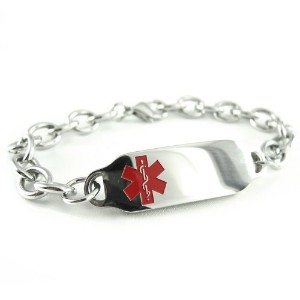Latex Allergy Safety Essential at the Dentist Office
 According to the American Latex Allergy Association, about 3 million people in the United States have a sensitivity to natural rubber latex. Because of this alarming statistic, Dr. Beck, Dr. Morrow and the staff at South Waterfront Dental, your best dentists in SW Portland, have made significant efforts in patient care in order to protect against latex allergy in our office.
According to the American Latex Allergy Association, about 3 million people in the United States have a sensitivity to natural rubber latex. Because of this alarming statistic, Dr. Beck, Dr. Morrow and the staff at South Waterfront Dental, your best dentists in SW Portland, have made significant efforts in patient care in order to protect against latex allergy in our office.
Latex Allergies Basics
Allergic reactions to Natural Rubber Latex is complex. Like other allergies, latex allergy usually develops after repeated exposure in susceptible individuals. Those who have had repeated surgeries or have worked in health care are especially at risk for developing a latex allergy.
Because of similar proteins, those who have allergies to foods such as avocados, tomatoes and bananas are at increased risk of becoming allergic to natural rubber latex. Those who have skin conditions that require medical care may also be at risk.
Natural rubber latex is a common ingredient found in a variety of consumer goods. These products include:
- Pacifiers/Baby Bottle Nipples
- Balloons
- appliance cords
- tires
- hoses
- hot water bottles
- rubber bands
Latex is also found in many dental and medical supplies including masks, gloves, syringes, catheters, dental dams and bandages. Because of these widespread products containing natural rubber latex, the team at South Waterfront Dental strives to ensure the safety of each patient.
Symptoms Associated with Latex Allergy
A sensitivity to natural rubber latex is accompanied by the onset of serious symptoms. These can include:
- Headache
- Reddened, itchy or teary eyes
- Hives or welts
- Swelling of affected area
- Runny nose
- Sneezing
- Abdominal cramps
- Chest tightness, wheezing, or shortness of breath (asthma)
- Sore throat, hoarse voice
These reactions may begin as a mild event but progress into a more serious condition. In some cases, a much more severe reaction called anaphylaxis may occur which lead to difficulty breathing, swelling of the throat, tongue and nose as well as loss of consciousness and even death.
If you suspect that you have a sensitivity or allergy to latex, see your doctor right away. Once your allergic reaction has been confirmed, it’s essential to take steps to protect yourself from latex allergy.
How to Avoid Exposure to Latex
One of the ways to protect yourself is to inform all medical and dental professionals involved in your overall health, including Dr. Beck, Dr. Morrow and the team at South Waterfront Dental. It’s important to be prepared to share this information with others. An alert identification bracelet is especially useful for this purpose. Keep any medications with you that treat this allergy, along with non-latex gloves and any other pertinent medical information.
The best way to treat this condition is to completely avoid any contact with natural rubber latex. There are many non-latex products that can be used to safely and effectively treat patients with latex allergies.
